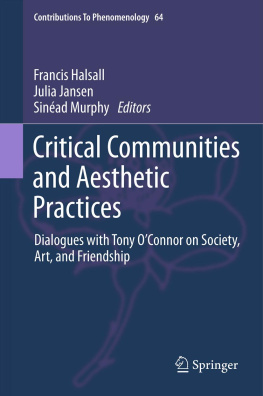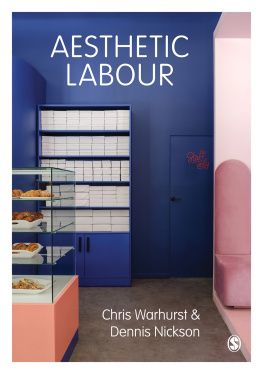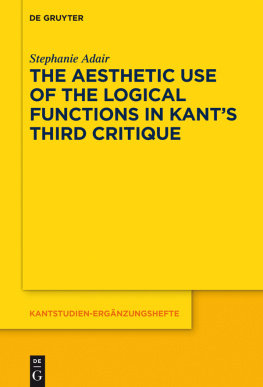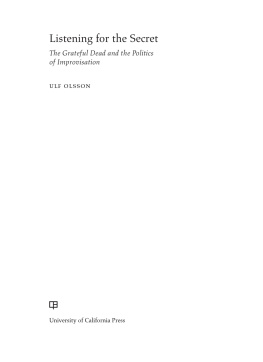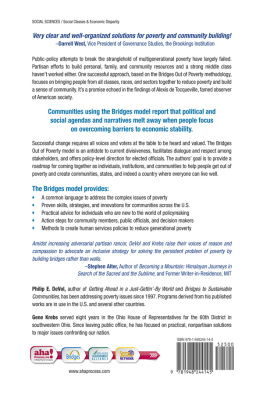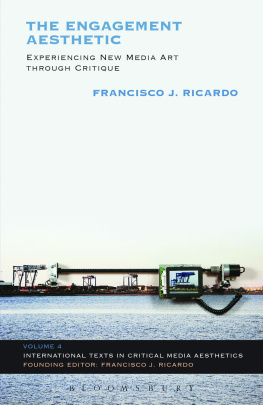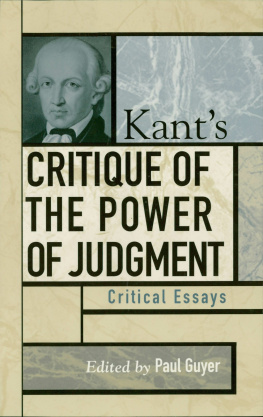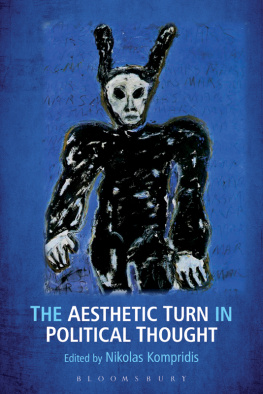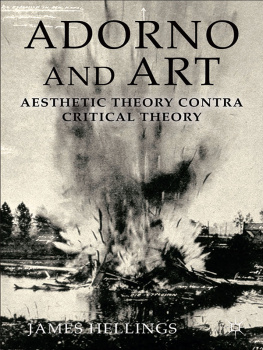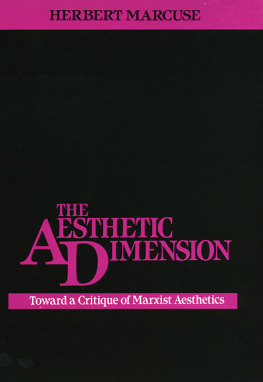Francis Halsall , Julia Jansen and Sinead Murphy (eds.) Contributions To Phenomenology Critical Communities and Aesthetic Practices Dialogues with Tony OConnor on Society, Art, and Friendship 10.1007/978-94-007-1509-7_1 Springer Science+Business Media B.V. 2012
1. Introduction: Critical Communities and Aesthetic Practices
At the 2007 Venice Biennale, Sophie Calle filled the French Pavillon with responses, by more than 100 women, to a personal letter that had originally been addressed to her; an email, to be precise, with which a boyfriend informed her that he would leave her. Take care of yourself, the email ends. This phrase became the title for the piece in which each participating woman responded to the email in her individual way and according to her profession.
Take Care of Yourself raises important questions and it challenges the expectations that are commonly brought to artworks. It also throws and interesting light on this book. Why would an artist make her own personal life public? Is it legitimate to turn the personal into art and to make art personal? Precisely four decades after Roland Barthes pronounced the death of the author, Suspicions arise. Is this first-person really her? Is the email authentic? Is the personal that Calle so readily reveals in her work (but not in interviews, we might add) real, or is it just a clever fiction?
More interesting than answers to these complex questions is the possibility that these answers need not matter. What does matter is that the personal origin of Calles work enables something to emerge which could not have been without it; the collage of voices, performances and texts exhibited as Take Care of Yourself can only be because of the personal; however real or not, this may be.
The same is true of this book with the important difference that we do know of the real existence of the philosopher Tony O Connor, in honour of whom it was conceived.
Festschriften such as this, although meant as tributes to especially esteemed colleagues, are often considered of lesser academic value. Articles come together in them, it is said, only arbitrarily; that is, as random selections of texts written by groups of people linked only by their personal connections to the tributee. However, the articles in this book have been arranged to highlight coherent themes which are shared by the contributions and which always informed Tonys thought and work; these are: the hermeneutics of art, politics and ethics, and friendship. And there are two themes running throughout the book as a whole and contributing to the sense of community amongst all authors.
First, all papers are, broadly speaking, phenomenological in outlook and demonstrate how contributions to phenomenology are always applied to particular and practical examples. Second all papers engage in questions of aesthetics broadly conceived. It is for this reason that we have chosen to open this introduction with the example of a work of art. Sophie Calles work suggests a different perspective on this very personal book. What matters is not only its real occasion Tonys retirement from University College Cork in Ireland but what emerges from this occasion. Here, we find a rare openness and experimental spirit among the contributors, which perhaps is only possible in this more personal (although still public and academic) context in which one feels justified in leaving (some) institutional conventions and constraints behind.
Douglas Burnhams contribution to this collection emerges from the research project at Staffordshire University, in which he collaborated with Tony and others to interrogate the similarities between making art and making philosophy. The commitment to inquiry is, Burnham explains, central to this project, to the extent that making art and making philosophy if conceived of primarily as processes of inquiry and less centrally in terms of the objects they produce can be understood, together. They are both modes of interaction, engagement and dialogue. Market, institutional, career pressures tend to obscure the potential of philosophy as a process of inquiry. Reflecting on the practice of philosophy, in conjunction with art practices (as in the Staffordshire Inquiry in Art and Philosophy project) can have the effect of reducing these pressures and restoring to philosophy its potential as inviting process and open exchange. The articles in this book demonstrate this last point.
Thus, like Sophie Calles Take Care of Yourself artwork, this philosophical book brings together individuals who are united in their attempt to respond, with care and according to their expertise. They all respond to Tony O Connor as philosopher and person, all in different ways: by interpreting Tonys work, by thinking through issues they know are on Tonys mind, by offering their own work for discussion, and by addressing Tony personally. What emerges in this open, inviting, but by no means uncritical, context reflects the breadth of processes that, as David Krell in this collection puts it so succinctly, have almost all their life ahead of them, processes that, as Krell describes, are not only not limited by original conditions by an authors intention, by strong notions of text, by career interests, by personal circumstances but live into the future in a manner that both foregrounds our human finitude and gestures towards the unbounded possibilities for interpretation that are the effects of this condition.
This is not, however, to deny that processes of inquiry, open and inviting as they may be, have their particular directions. And this book is no exception, collated as it is around its central concern with aesthetic practices and critical communities. These two themes regulate the articles in this volume and lend the book its focus and systematic character.
The theme of aesthetic practices has its starting point in the rich and suggestive openness of aesthetic experience, but reaches far beyond a preoccupation with art or issues of aesthetic appreciation. It rather addresses practices from the full range of human interests which involve views, values, and norms that are not settled, for once and for all, but do, by appeal to particular communities, still claim validity beyond their relative standpoint. Like Kantian aesthetic judgments, these views, values and norms are taken up freely, that is, with a degree of independence from cognitive and moral laws. These judgements appeal to shared, contextual and communal, criteria, and not to universally objective standards. They do not function in any neutral and aboslute way, but as interlocutary, argumentative and open to agreement or dissent. Thus, aesthetic practices and critical communities are the two sides of a historical and social, hermeneutical, process from which common standards emerge and in which practices and communities are themselves continually co-constituted.

